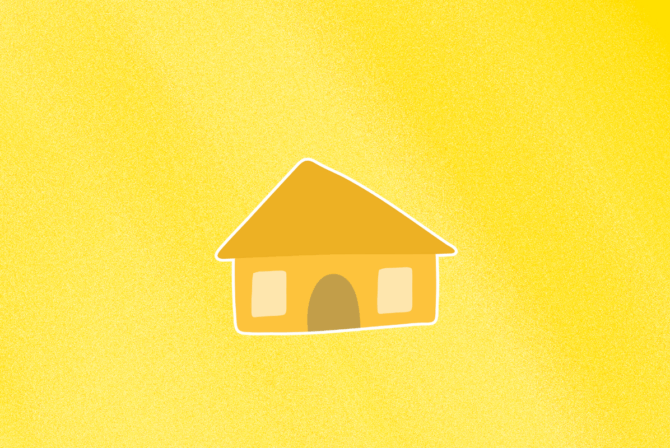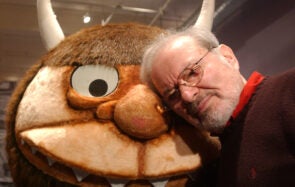When a friend in my mah jong group asked if anyone wanted a DNA ancestry kit she hadn’t used, I was the first to exclaim, “Ooooh, I do,” before anyone else could beat me to the punch.
Despite my enthusiasm, I threw the kit into a corner of my kitchen and forgot about it for a few months. It would catch my eye from time to time, but I kept wondering what I might have to gain. The only thing about my ancestry that remained an unknown was how our family’s last name ended up being Smith. Growing up in a largely Jewish neighborhood on Long Island, I envied the Goldbergs, Feldmans, Levines and Schwartzes whose names automatically conferred their Jewish identity.
“Probably changed on Ellis Island,” my father would say, dismissive of the question. My grandfather and his sisters, all born in the United States, stuck with that story, but I didn’t buy it. I was pretty sure my great-grandparents had settled into their tenement on the Lower East Side about 10 years or so before Ellis Island become the entry point to a new life in the United States. And, even if the immigration agents at Castle Garden, the more likely gate to my great-grandparents New World, were as diligent at helping newcomers Americanize their names as they were at Ellis Island, couldn’t they or my great-grandfather been a little more creative?
Other than that, I didn’t need a DNA test to tell me I was an Ashkenazi Jew. I knew my mother’s parents were from Russia (or at least what was Russia at the time they left) the first time my grandmother asked me in her heavily accented English if I vanted a sandvich. My maternal grandfather drank tea from a glass cup and sipped it through a sugar cube clenched between his teeth. “The Russian vay,” he would proudly tell us, in case we had forgotten that the true homeland was somewhere other than Sheepshead Bay.
The origins of my father’s side of the family were a little harder to pin down. Keeping track of family history was not the Smiths’ strong suit. What I did know was that my grandmother had come over from Poland with her parents and an older brother. Though my grandfather and his siblings were born here, no one knew for sure where their parents were born, other than somewhere in Europe. Rumors and some family tree sleuthing indicated that they were most likely from Vilna, but that has never been confirmed or denied.
Still, I wondered if I would find out anything interesting. I had always harbored a secret hope that I was in some small part Irish. Blue-eyed, fair skinned, slightly freckled and born on St. Patrick’s Day, I felt I must have some blood connection to the residents of the Emerald Isle. Perhaps there was some scandal in the Smith family background that would have shown up through the detected chromosome of a great-great-grandparent’s secret Irish lover. Could there have been a more interesting reason these Jews from Vilna were named Smith?
The kit resurfaced on a rare lazy midwinter Sunday when I didn’t have much to do but read the newspaper and HGTV reruns. So, I spit into that tube and off the box went.
I had almost forgotten about it in when, a few weeks later, a familiar logo in the upper lefthand corner of the envelope caught my eye as I sifted through the mail.
I didn’t even wait until I got into my apartment to rip open the envelope, eager to discover what surprising glimpse into my family’s past would be found within the report. Standing by the mailboxes in my building’s lobby, my face fell as I read the words: 100% Eastern European Jewish. Not 98%. Not 99%. 100%.
It turned out my genetics were as generic as expected. I wasn’t surprised but, seriously, in hundreds of years wandering around the desert, none of my ancestors snuck behind a dune to have an illicit hook-up? None of my idishe frauen (female Jewish ancestors) snuck out of the shtetl to seek the affections of a handsome Gentile? I’ve seen “Fiddler on the Roof.” It happens.
I envied the friends who had done similar DNA tests and found out their heritage was a mash-up of five or more Western European countries. Their ancestry sounded more like a complex math problem than a rundown of their origins. I’d hear my WASP-y friends boast with pronouncements like, “I’m 3% Scottish, 37% Welsh, 23% French, 22% German and 15% Andorran.” My Sephardic friends had similar equations, the Spanish Inquisition ensuring them a mix of Turkish, Greek and Middle Eastern blood.
My math, on the other hand, seemed to be more on a third-grade level. 100% Ashkenzi Jew. According to Ancestry.com, there was no need to discern whether I was Russian, Polish, Lithuanian, Ukranian or some other nationality within that general geographic region. I am simply a 100% Ashkenazi Jew from Eastern Europe.
In Ancestry.com’s defense, the ever-shifting borders of the Pale of Settlement made my ethnicity somewhat difficult to pinpoint. Without knowing the precise or even approximate dates of my relatives’ rather hasty departures from their small towns, it was hard to establish exactly what country they were fleeing. The names and spelling of the shtetls they had called home were ever shifting, making it difficult to locate them on even the most detailed maps and even harder to know which country had hoisted its flag in the town square at the time of their departure.
Still, there was a cause for some excitement: A flyer that came with the results told me that I now had three months of free access to Ancestry.com’s family tree builder. Although I was somewhat daunted about registering my DNA, fearful of discovering that I had hundreds of siblings fathered by an overzealous sperm donor or that I was related to a key suspect in a cold case murder mystery, I opened my laptop and logged on.
A day or so later, I received an email letting me know that I had a message from a potential third or fourth cousin named Jeffrey Smith. Jeffrey was trying to figure out how we might be related. He rattled off a bunch of names that I hadn’t heard before but added, “If it helps, our Smith family line started with Lewis Smith, who came through Ellis Island in 1902.” Sadly, it didn’t help. Lewis Smith had never popped up in my attempts at family history and my mother, whose memory in her 90th year is squarely intact, was also unable to place him. I knew that there were a couple of mysterious great uncles on both sides of the family, both of whom seemed to have achieved pariah status among my relatives. Yet, although their misdeeds and location remain unknown, neither of them is named Lewis.
I shared the pariah uncle information with Jeff, along with the few other details about my paternal grandfather and his siblings. Jeff couldn’t draw any straight lines between us either.
He did, however, have one useful tidbit of information — the likely origin of Smith. “I found out that when Lewis come through Ellis Island, his name was listed as Schmied,” Jeff told me. “Over the years it became Americanized, first to Schmidt and then to Smith.” Following that email exchange, Cousin Jeff and I became as estranged as the pariah uncles and their siblings.
So, it turns out that my family history would make for one very boring episode of “Finding Your Roots.” I’m not related to anyone famous. There are no ancestors with ties to the founding fathers. My relatives, if from a romantic perspective only, lived a rather staid life in Eastern Europe. I am not in any way, shape or form Irish. Not even a wee bit. Perhaps my last name is really Schmied. Perhaps not.
The math on my heritage is fairly simple. I’m not a little this or a little that. Instead, I’m connected to approximately 9.9 million other Jews who, if they also spat into a tube, are likely 100% Ashkenazi Jews. Who needs more family members than that?








